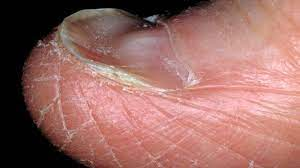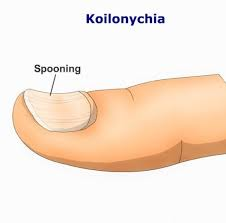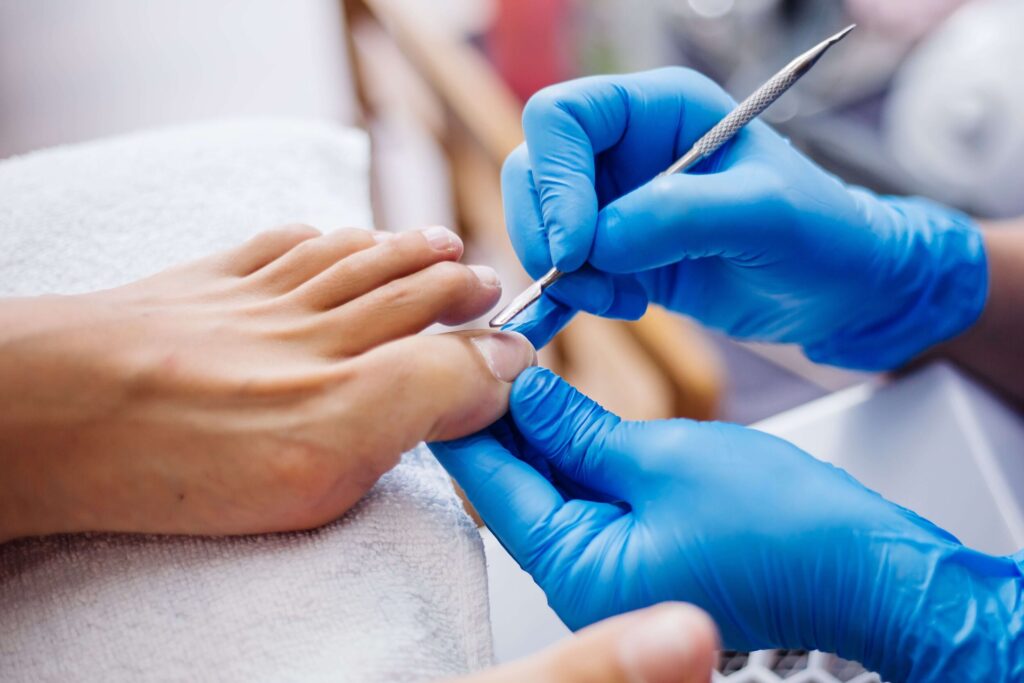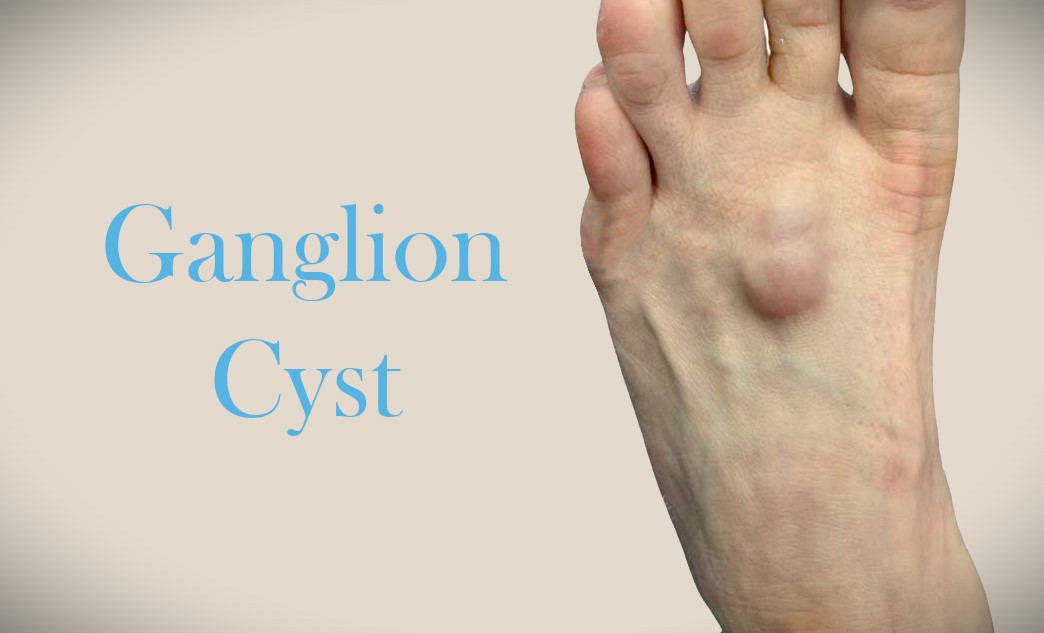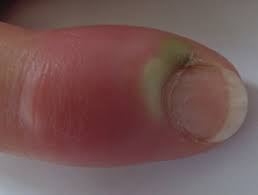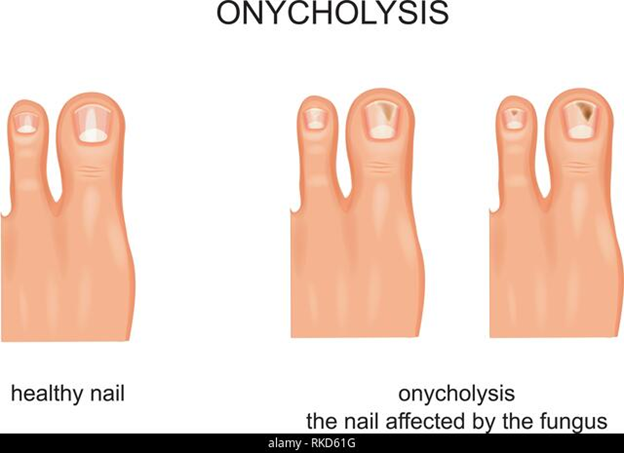Spoon Nails (Koilonychia) – Identification, Causes & Treatment
Did you know that the appearance of your nails can be a window into your overall health? Spoon nail, or koilonychia, is a great example. Concave-shaped nails can reveal a lot about underlying health conditions that require attention.
In this piece, we will explore this condition, its causes, diagnosis, treatment, and prevention to help you take better care of your nails and overall health.
Key Takeaways
- Understanding spoon nails is essential to identify and address underlying causes.
- Diagnosis requires a visual examination of the nails, with additional tests used depending on the suspected cause.
- Treatment involves addressing the root cause and taking preventative measures such as nail hygiene, a balanced diet, avoiding exposure to chemicals/trauma & monitoring health regularly for early diagnosis & intervention.
Understanding Spoon Nails
Spoon nails, medically known as koilonychia, are characterized by thin, concave-shaped nails that resemble a spoon, often indicating an underlying health condition like iron deficiency anemia. Addressing the root cause of spoon nails, which can also be referred to as concave nails, is important, as this can effectively reverse the condition and enhance nail health.
Characteristics of Spoon Nails
Spoon nails, also known as spoon-shaped nails or soft nails, are easily identifiable by their distinct appearance. They are thin, brittle, and centrally depressed, giving them a scooped-out look. This abnormal shape can affect the nail’s ability to protect the sensitive nail bed underneath, making it more susceptible to damage and infection.
One common misconception is that nail polish can be a solution to mask the appearance of spoon nails. Even though it offers a temporary aesthetic fix, addressing the underlying cause of the condition is critical rather than solely relying on temporary solutions.
Causes of Spoon Nails
Iron deficiency anemia is the most common cause of spoon nails. This occurs when your body does not have enough healthy red blood cells to carry oxygen throughout the body. Iron is essential for producing healthy red blood cells and maintaining proper nail health. An iron deficiency can lead to chronic iron deficiency, resulting in the development of spoon nails.
Although iron deficiency anemia is the most prevalent cause of koilonychia, other factors can also contribute to the development of spoon nails including:
- trauma
- fungal infections
- thyroid disorders
- certain genetic conditions like nail-patella syndrome
If you suspect you have koilonychia, seeking medical advice for an accurate diagnosis and treatment is of utmost importance.
Diagnosing Koilonychia
Establishing an accurate diagnosis of koilonychia is key to determining a suitable treatment plan. Here at Hurst Podiatry, we will typically begin with a visual examination of the nails and may order additional diagnostic tests depending on the suspected cause.
We will delve into the detailed steps involved in diagnosing koilonychia.
Visual Examination
A visual examination of the nails can help identify koilonychia and its severity. The “water-drop test” is a clinical test used to diagnose koilonychia, where a few water drops are dispensed over the nail plate using a 1 ml syringe. Koilonychia is characterized by concave nail plates instead of normal convex nail plates. When water droplets come in contact with such nail plates, they tend to accumulate and form pools.
This simple test can help healthcare professionals determine the presence of koilonychia and guide further diagnostic tests, such as blood tests, to assess anemia or other underlying health conditions.
Diagnostic Tests
Diagnostic tests, such as blood tests, may be ordered to determine the underlying cause of spoon nails. A complete blood count (CBC) can assess anemia, a ferritin test to measure iron levels, and a thyroid-stimulating hormone (TSH) test to check for thyroid problems are other tests employed to diagnose koilonychia.
In cases where the cause of koilonychia remains unidentified even after blood investigations, the likelihood of hereditary or familial koilonychia should be considered. A comprehensive evaluation may be requested by your healthcare provider to establish a proper diagnosis. This evaluation may include:
- A detailed account of medical conditions
- Medications
- Surgical procedures
- Familial history
- Dietary habits
- Lifestyle choices
Treatment Options for Spoon Nails
Treatment options for spoon nails depend on the underlying cause, with iron deficiency anemia being the most common cause requiring treatment.
Below are various treatment options for addressing iron deficiency anemia and other underlying causes of koilonychia.
Addressing Iron Deficiency Anemia
To address iron deficiency anemia, healthcare professionals may prescribe iron supplements or recommend an iron-rich diet to improve nail health and reverse the effects of koilonychia. However, before taking iron supplements, it’s imperative to consult a healthcare professional, as too much iron can have adverse effects on the body.
In addition to taking iron supplements, consuming a balanced diet rich in iron, vitamin C, and other nutrients that promote healthy nail growth can also help prevent spoon nails. Some foods that are high in iron include:
- Red meat
- Spinach
- Lentils
- Tofu
- Quinoa
Vitamin C, found in citrus fruits and green leafy vegetables, can enhance iron absorption, aiding the body to absorb iron from dietary sources and maintain healthy nails.
Treating Other Underlying Causes
Treating other underlying causes, such as thyroid disorders or fungal nail infections, may also help improve the appearance of spoon nails. For example, thyroid hormone replacement therapy may be recommended for individuals with thyroid disorders, while antifungal medications can be prescribed for those with fungal infections.
Consulting with a healthcare provider is vital for personalized treatment recommendations based on the specific cause of koilonychia. Addressing the underlying cause can not only improve nail appearance but also prevent further complications and promote overall health.
Self-Care Measures for Nail Health
In addition to seeking medical treatment for the underlying cause of spoon nails, certain self-care measures can help improve nail health and prevent further damage and infection.
Nail Hygiene
Nail hygiene is the foundation for maintaining healthy nails and involves:
- Keeping nails clean, dry, and trimmed to prevent infection and damage
- Washing your hands and nails regularly with soap and water
- Use a nail brush to scrub underneath the nails to maintain cleanliness.
Keeping nails dry is equally important. After washing, pat your hands and nails with a clean towel to remove excess moisture. Avoid submerging your hands in water for extended periods, as this can weaken nails and make them more susceptible to damage.
Nail Care
Proper nail care can help prevent the development of spoon nails and maintain overall nail health. Refrain from biting your nails and wear protective gloves when handling chemicals or engaging in activities that may cause physical injury to the nails.
Moisturizing your nails and cuticles is another important aspect of nail care. Using a moisturizing cream or oil, such as coconut oil, and massaging it into the nails and cuticles can help prevent brittleness and dryness. Regularly trimming and filing your nails in one direction can also help maintain their health and appearance.
Risk Factors and Prevention
Understanding the risk factors for developing spoon nails and taking preventive measures can help maintain healthy nails and address any underlying health conditions.
This section will illuminate the risk factors and preventive measures for spoon nails.
Risk Factors
Risk factors for developing spoon nails include poor diet, certain medical conditions, and occupational exposure to chemicals or trauma. Iron deficiency anemia, thyroid disorders, and exposure to certain chemicals can all contribute to the development of koilonychia.
Other risk factors for koilonychia include:
- Iron deficiency anemia
- Raynaud’s disease
- Thyroid disorders
- Trauma to the nails
- Chemical exposure
- Certain medications
Being aware of these risk factors and taking suitable measures to prevent the onset of koilonychia is paramount.
Preventative Measures
Preventative measures for spoon nails involve addressing risk factors, such as maintaining a balanced diet and protecting nails from damage. Consuming a balanced diet that incorporates a range of fruits, vegetables, whole grains, and lean proteins can assist in sustaining a healthy weight and provide essential nutrients for nail health.
In addition to maintaining a healthy diet, avoiding exposure to chemicals or trauma and managing any underlying medical conditions can also help prevent the development of spoon nails. Regularly monitoring nail health can aid in the early detection of koilonychia and prompt timely medical intervention.
Recognising Spoon Nails as a Symptom
Recognizing spoon nails as a symptom of an underlying medical condition is crucial for proper diagnosis and treatment. This section will highlight the importance of recognizing spoon nails as a symptom and pinpoint when to seek medical counsel.
When to See a Doctor
If you suspect you have koilonychia, it is advisable to consult a doctor, as it may indicate an underlying health issue such as iron deficiency anemia, thyroid disorders, or fungal infections. Early diagnosis and treatment can help address the underlying cause, prevent further complications, and promote overall health.
It is necessary to consult a doctor for spoon nails if there are any systemic involvement or hematologic issues, or if the underlying cause needs to be evaluated and treated. Timely medical intervention can make a significant difference in improving nail health and addressing underlying health conditions.
Monitoring Nail Health
Regularly monitoring nail health can help identify changes in nail appearance, such as:
- Discolouration
- Ridges
- Splitting
- The development of spoon nails
These signs of changes in nail appearance should prompt timely medical intervention.
Observing any changes in the appearance of your nails and seeking medical intervention when necessary is vital to address any underlying health conditions and prevent subsequent complications. Regular check-ups with a healthcare professional can also aid in the early detection and management of koilonychia.
Summary
In conclusion, spoon nails, or koilonychia, can be a symptom of an underlying health condition such as iron deficiency anemia, thyroid disorders, or fungal infections.
Early diagnosis and proper treatment are essential for addressing the root cause and improving nail health. If you suspect that you have spoon nails, book an appointment online here at Hurst Podiatry. We’ll diagnose your condition and provide a treatment plan to help you get your nails back in the pink of health. Remember, your nails are a reflection of your overall health, so take good care of them!

